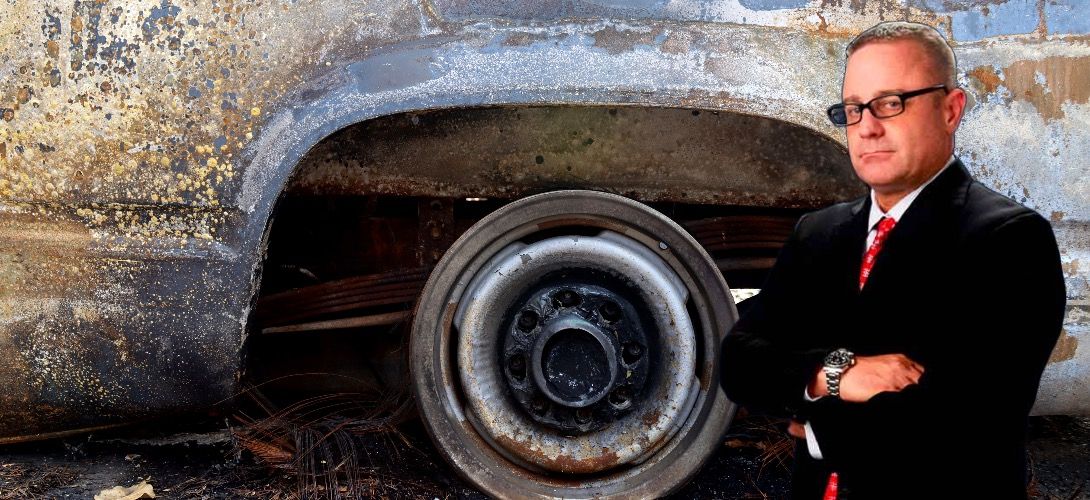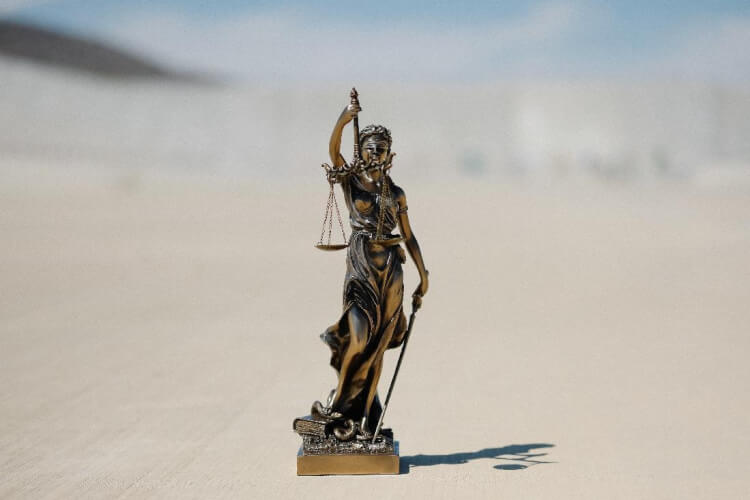
What is Negligence Per Se?

What is Negligence Per Se?
All About Negligence Per Se

Expert Los Angeles area personal injury attorney, Michael Ehline, explains how certain factors can affect why accidents can happen and how the law deals with them.
In most personal injury or automobile accident claims, a victim can try and sue the responsible party to obtain compensation, called negligence damages. Negligence means a person failed to use the type of care they should have in that situation. Damages can often be acquired for personal injuries, property damage, and more.
Based on your case and its unique facts, a California personal injury attorney might be able to prove the at-fault party’s negligence under the doctrine of negligence per se. Negligence per se, also known as statutory negligence, is an inference of negligence brought about by a violation of a statute or code.
In short, it is another way to prove negligence in personal injury cases. I am Los Angeles personal injury lawyer Michael Ehline. I have over 15 years of experience as a plaintiff’s injury attorney working for Ehline Law Firm.
Below I will discuss how a plaintiff can establish negligence under the legal doctrine known as negligence per se. I will also include some examples and explanations of its application in various personal injury cases, so let’s begin.
This breach of a statute or law creates a rebuttable presumption of negligence (Ergo: the defendant failed to act as a reasonable person) in California courts. Some California judges reference this law theory as “statutory negligence,” but it is a “per se” claim in law schools.
Negligence Per Se – Presumption of Negligence In Car Accident Cases?
Car accidents and other damages claims like medical malpractice don’t happen in a vacuum. And unless you have a solid attorney-client relationship, it can become harder to prove negligence in a personal injury lawsuit. To begin with, many potential causes of incidents like crashes or construction accidents and how they could occur exist.
In ordinary negligence cases, you must prove the defendant owed a duty of reasonable care. You must also show the at-fault party breached that duty, leading to an injury and associated damages.
Per Se Negligence Distinguished
In a traditional negligence claim, an experienced attorney must meet the plaintiff’s burden during the liability phase of proving fault. If confirmed, the insurance company, court, or jury moves on to the damages phase.
However, a plaintiff can often avoid the bifurcation of liability and damages based upon a defendant’s violation of a safety statute. If so, then you move to prove your injuries are ordinary and reasonable.
- Negligence is Presumed When There is a Statutory Duty?
Let’s consider how and when traditional negligence rules can be set aside when proving negligence. A presumption of negligence may exist:
- If a California Vehicle Code Section, building code, or even a federal law exists
- The statute was designed to prevent the person from being hurt
- The particular kind of accident or injury, and harm occurred to that protected class
- The statutory violation caused harm.
It is essential to weigh all of these factors when trying to piece together the whole picture. While independent research and police reports may undoubtedly help, a skilled attorney is usually the keystone to understanding whether the defendant’s conduct meets the definition of negligence per se.
Example: When a contractor fails to obey a building code when building a home and the home caves, killing somebody, the safety violations create a presumption of negligence. Negligence is presumed if the building contractor’s breach of the safety code was the real cause of the injury or wrongful death. However, if the defendant can prove something other than a violation of the statute or that the law was not designed to protect people from that harm, the presumption can be rebutted.
Strict liability and presumption of negligence are vital areas of law that must be considered in such cases. A vehicle with bad tires, brakes, and perhaps a faulty clutch could get into an accident. And when a vehicle owner knows such risks yet does nothing, they can be held liable under the California Vehicle section designed to prevent these types of automobile accidents.
What is the Difference Between Strict Liability?
Strict liability states that certain parties responsible for a tort, in this case, a car accident, under their superior status, can be held strictly liable whether they were negligent or not.
For example, a taxi cab or bus driver is a professional common carrier with your life in their hands. Hence, these defendants can be held strictly liable when an accident occurs.
Strict Liability is Defined as:
“In criminal and civil law, strict liability is a standard of liability under which a person is legally responsible for the consequences flowing from an activity even in the absence of fault or criminal intent on the part of the defendant.” (Source).
Contrasting this with negligence per se, which depends upon the violation of a statute or code, strict liability would exist for parties such as cruise ship operators, or cab drivers, for example, to a passenger.
They owe a special duty of care to prevent injuries to their fares that become automatically triggered by their status as common carriers for hire. Are you getting this so far? An experienced auto accident lawyer can explain the details more thoroughly if you’re still confused.
What is An Example of a Negligence Per Se Car Accident Claim?
An excellent example to help you understand what negligence per se includes the following hypothetical about a car wreck with allegations of drunk driving on a California interstate.
Violation of a Vehicle Code section meeting the negligence elements per se becomes conclusive evidence of duty and breach unless rebutted.
Let’s pretend that rider A is stopped behind about vehicle, at a stoplight, sitting on his motorcycle, and in compliance with the law in similar circumstances.
Behind A is B, under the influence of alcohol and drugs in a fast-approaching Big Rig Truck. B fails to stop and hits rider A, killing A after running A’s motorcycle over. Later, at the hospital, B tested positive for Crystal meth and was over 0.10% blood alcohol content. (“B.A.C.”).
- California Vehicle Code Section 23152 (a) says it is against the law for someone under the influence of an alcoholic beverage to operate a motorized vehicle.
- California Vehicle Code Section 2315d (b) says it is unlawful for a person to have 0.08% B.A.C., or a more significant amount of alcohol by body weight, to operate a motorcar.
- California Vehicle Code Section 23152 (f) says it is unlawful for someone under the influence of any drug to drive a motor vehicle.
- California Vehicle Code Section 23152 (g) says it is unlawful to drive under the combined influence of alcohol or drugs.
Since B killed A in a drunk and impaired by drugs while driving accident, B violated all four of the above statutes. Either of their violations could be used to help establish a presumption of negligence element of a future wrongful death lawsuit filed by A’s surviving spouse or kids.
Because A was in a group protected by the statute or code (other road users, pedestrians, motorcycle riders, and vehicle occupants) and the defendant violated the laws designed to prevent that type of harm, the court may issue the rebuttable presumption of negligence instruction and move on to the damages phase.
If a driver strikes another person and, in the process, is also violating a traffic law, the driver may be negligent under this law doctrine.
Violation Must Cause the Mishap?
Yes. The violation must be the direct result of the mishap. However, the plaintiff will need to look at the legislative intent of this statute defendant violates. D.U.I. statutes are designed to prevent deaths and serious injuries, which is the direct intent.
But a simple moving violation may make traffic flow more smoothly. So, in that case, the court would not issue negligence per se jury instruction under CACI No. 418.
Moreover, the Vehicle Code is a floor and not a ceiling. So let’s suppose the defendant did not violate the vehicle code and still caused a car crash. Compliance with the Vehicle Code is not a get-out-of-jail-free card.
The defendant would be judged under ordinary negligence principles because the Vehicle Code is only a guidebook and requires common sense, not just blind obedience. You can always contact a Los Angeles car accident lawyer to learn more about the nuances.
Are There Any Exceptions to Negligence Per Se Rules?
Yes. Exceptions do apply when:
- Complying with the statute would have caused more harm than good (greater risk if the defendant complied)
- Compliance was impossible due to a matter beyond the defendant’s management.
Even if the four-part negligence per se test is met, there will be no presumption of negligence if an exception applies. If not, the negligent wrongdoer was in contravention of a Vehicle Code Section or Statute (Ex: reckless driving, etc.).
The transgression must have been the proximate cause and actual cause of the mental and physical suffering and other damages. And the victim must be in a protected class.
Was the statute or code created to prevent the type of harm? If so, this is called negligence, per se.
Can This Per Se Jury Instruction Create Leverage in Your Potential Suit?
Getting the victim leverage by creating a presumption of negligence in the eyes of the insurance adjuster and later defense team(s) is always a good thing for a person seeking a monetary payout for bad injuries. In short, it is an easier way to win your case.
There is always a powerful possibility that the at-fault factor is subject to negligence per se instruction.
So this is a legal theory that puts the burden on the accused party to:
“prove” “they were not at fault.”
This burden can turn the tables by forcing the accused to rebut the violation of the statute. A defendant can say it had nothing to do with the purpose of the law. But once the bell is rung, this becomes an onerous burden to rebut.
Does Your Lawyer Even Plead This Theory?
While many excellent P.I. attorneys understand the doctrine, many newbies or lazy ones don’t know how to plead this theory, and some people don’t even care. Usually, the party asserting the claim has the burden of proof.
Naturally, this can help a victim gain leverage in an accident case. Perhaps the guy who hit you ran a red light? This violation is negligent but also a statutory violation of the CVC. But you certainly have a more durable case if all the elements remain.
Negligence Per Se is Not Just for Car Accident Cases?
But other statutes exist besides the Vehicle Code. Building Codes, City Codes, and Health and Safety Code violations could bring this theory into play. Examples include injuries from a trip, slipping, and falling on a public or private sidewalk.
Or it could even be a violation of the California elder abuse statutes against an innocent senior citizen. If the rules fit the elements, protected person, harm, type of damage, and injury caused, that’s negligence per se!
What if Defendant Rebuts Your Negligence Per Se Claim?
Rebutting the presumption is not the end of the matter, however. Many issues are at play here, and all of them require the help of a skilled attorney.
How Negligence/Statutory Negligence Could Affect Your Claim
During a California personal injury case, an experienced personal injury attorney may petition the doctrine of negligence per se against the liable party or parties. The burden is then shifted to the defendant so they can prove or disprove the denunciation. However, negligence per se is an onerous burden compared to strict liability or ordinary negligence.
Your injury lawyer could try and find a law broken by the defendant and use that violation to prove negligence per se standards were violated in your example of failure. Typically, this will be one of many theories of liability used to hit a grand slam to cover your losses.
Schedule a Free Consultation to Recover Damages
Ehline Law’s experience assisting in thousands of cases has rebuilt many lives after auto accidents. Our friendly, more personable approach has made us a multi-million dollar law firm in Los Angeles County, CA. Let a lawyer help you know what negligence per se is and why it matters when clients present their claims. To acquire more information about distinguishing between negligence and negligence per se, contact us immediately.
You can schedule a confidential, risk-free consultation to ask questions about your rights and discuss filing a potential personal injury lawsuit in your jurisdiction. Call (213) 596-9642.
Categories
- A to Z Personal Injury Podcast
- Car Accident
- Government Tort Blog
- Insurance Law Blog
- Piloting and Aviation Accident Blog
- Premises Liability Blog
- Products Defect Blog
- Recreation-Sports Accident Blog
- Reports
- Service Related Cancer Blog
- Sexual Assault Blog
- Spinal Cord Injury Blog
- Torts, Examples, Explanations
- Train Accidents Blog
- TV, Media & Firm News
- Uncategorized
Firm Archive
Main Los Angeles Location

Michael Ehline
Michael Ehline is an inactive U.S. Marine and world-famous legal historian. Michael helped draft the Cruise Ship Safety Act and has won some of U.S. history’s largest motorcycle accident settlements. Together with his legal team, Michael and the Ehline Law Firm collect damages on behalf of clients. We pride ourselves on being available to answer your most pressing and difficult questions 24/7. We are proud sponsors of the Paul Ehline Memorial Motorcycle Ride and a Service Disabled Veteran Operated Business. (SDVOB.) We are ready to fight.
Go here for More Verdicts and Settlements.
